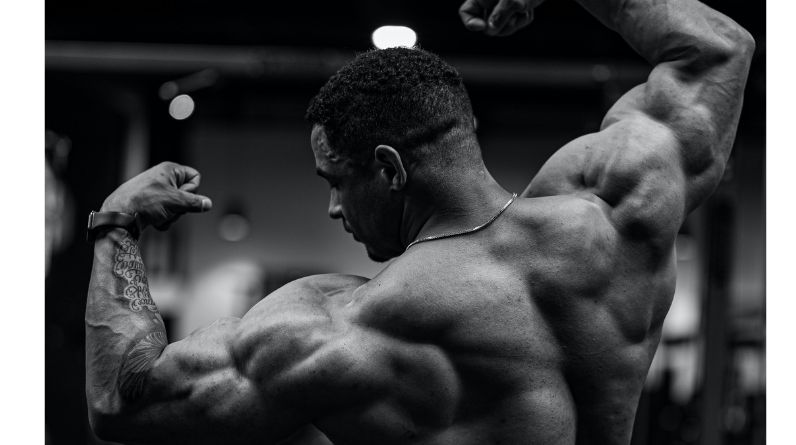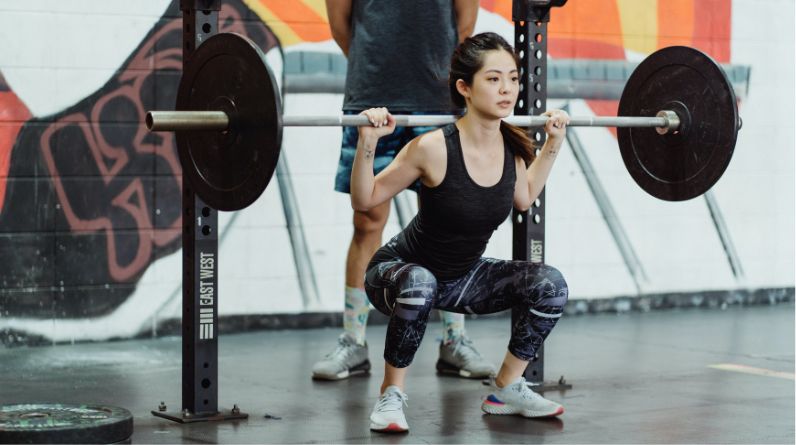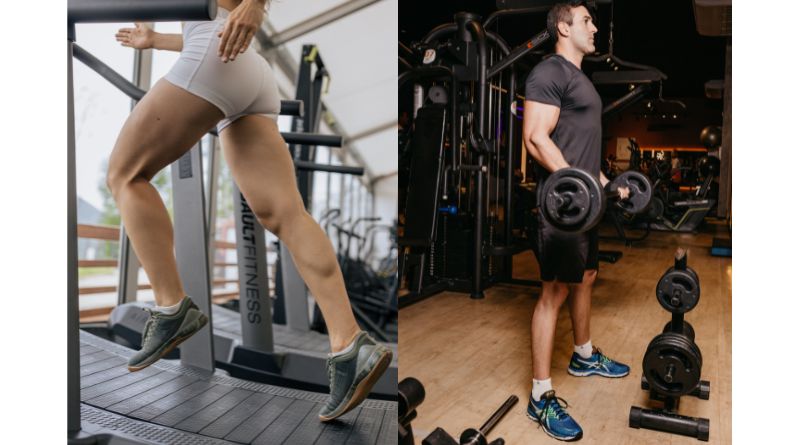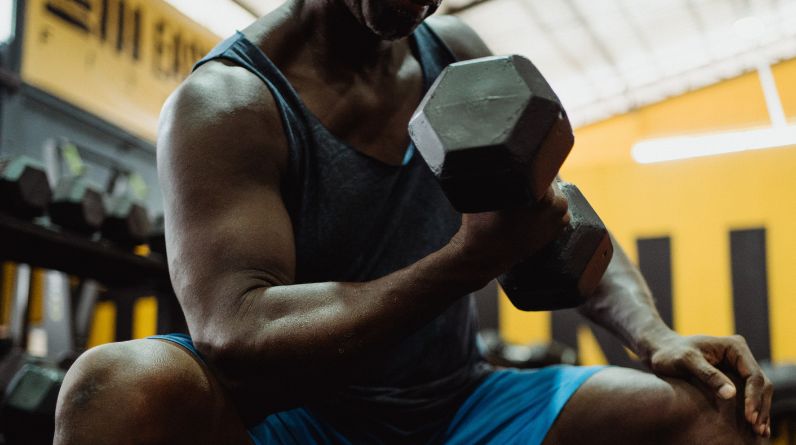
Broad and muscular shoulders not only look good, but they also help with overall strength and stability. A tailored approach with a combination of workouts aimed to build the deltoid muscles is required to achieve shoulder width. In this comprehensive article, we’ll look at a variety of exercises, strategies, and recommendations for efficiently unlocking shoulder width.
Understanding Shoulder Anatomy
Before getting started with workouts, it’s important to grasp the anatomy of the shoulder. The shoulder is a complicated joint that is made up of bones, ligaments, and muscles. The deltoid muscle, which has three different heads (anterior, lateral, and posterior), influences shoulder width and look significantly.
Effective Shoulder Exercises
1. Overhead Shoulder Press:
The overhead shoulder press is a key exercise for shoulder development. It focuses on the entire deltoid, highlighting both strength and size. This compound movement, whether performed with a barbell or dumbbells, activates several muscular fibers, promoting overall shoulder growth.
2. Lateral Raises:
Lateral raises target the lateral head of the deltoid, which influences shoulder breadth. The aim is to perform lateral lifts precisely while keeping appropriate form and control throughout. This isolation exercise focuses on a specific area that is important for gaining wider shoulders.
3. Front Raises:
Front raises target the anterior head of the deltoid muscle. Incorporating modifications into your exercise, such as alternating front raises or employing cable resistance, adds flexibility. This versatility ensures that the front deltoid is effectively targeted.
4. Upright Rows:
Upright rows are a complex exercise that works both the lateral and posterior deltoid heads. While effective, extreme caution is required to avoid shoulder impingement. Maintaining a good trajectory and avoiding excessive shoulder elevation are critical.
5. Shrugs:
Shrugs primarily engage the trapezius muscles while also involving the upper deltoids. Shrugs are a good supplement to a thorough shoulder workout since a strong trapezius contributes to the overall aesthetics of muscular shoulders.
6. Face Pulls:
Face pulls on a cable machine primarily target the back deltoids. This exercise develops not just shoulder width but also balanced shoulder development. Face pulls correct this by addressing the posterior part of the shoulders, which is typically disregarded.
7. Arnold Press:
The Arnold press, named after Arnold Schwarzenegger, is a dynamic twist on the standard shoulder press. Throughout the movement, the twisting motion works multiple regions of the deltoid, offering a comprehensive workout for shoulder development.
8. Wide Grip Upright Rows:
In upright rows, widening the grip emphasizes the lateral head of the deltoid, promoting breadth. However, extreme shoulder elevation, which can cause impingement difficulties, must be avoided. Proper form ensures that the lateral deltoid is addressed successfully without jeopardizing shoulder health.
Training Techniques for Shoulder Width
1. Progressive Overload:
The notion of gradual overload is essential for developing shoulder breadth. It entails gradually increasing the resistance applied to the muscles. This can be accomplished by gradually increasing the weight, using resistance bands, or adjusting other variables. This progressive increase stresses the muscles, causing them to adapt and grow, which is an important step in achieving wider shoulders..
2. Mind-Muscle Connection:
The goal of the mind-muscle connection is to create a conscious relationship between your mind and the targeted muscle group. This increased awareness guarantees that each repetition is meaningful and that all of the muscles are fully engaged. When it comes to shoulder width, focusing on the lateral and posterior deltoids during exercises maximizes stimulation and growth.
3. Full Range of Motion:
Exercising across the entire range of motion is essential for complete muscle activation and joint health. This method ensures that the muscles are pushed over their whole contractile range, which promotes optimal development. A complete range of motion in shoulder workouts helps to engage diverse muscle fibers, which helps to improve total shoulder breadth.
4. Balanced Training:
Balanced exercise is critical for avoiding disproportionate muscle development and lowering the chance of injury. Front, lateral, and posterior deltoids should all be worked on separately. Neglecting any one area can result in imbalances that affect both aesthetics and functional strength. A comprehensive approach to shoulder training encourages proportional development.
5. Nutrition and Recovery:
Nutrition is essential for good shoulder training. Adequate protein consumption is essential for muscle repair and growth. Furthermore, providing adequate overall calorie intake gives the energy required for hard workouts. The emphasis on healing is also critical. Muscles take time to mend and strengthen, emphasizing the importance of adequate rest, sleep, and overall recovery techniques in the goal of shoulder width.
Frequently Asked Questions
1. Is it necessary to lift heavy for shoulder width?
A combination of heavy and light lifting is required to achieve shoulder width. Heavy weights encourage muscular growth, particularly in the deltoids, but perfect form is essential to avoid injury. Incorporate complex actions such as overhead lifts and lateral raises with heavy weights while concentrating on controlled motions.
2. How often should I train my shoulders for width?
It is best to train your shoulders 2-3 times per week. This frequency enables for sufficient stimulation and recovery. Overtraining can stymie growth and lead to injury, so maintain consistency over time.
3. Can bodyweight exercises contribute to shoulder width?
Bodyweight exercises such as handstand push-ups and pike push-ups engage and build the shoulders. However, integrating resistance, whether through extra weight or through the use of tools such as resistance bands, is critical for appropriate shoulder width.
4. Do genetics play a role in shoulder width?
Your shoulder anatomy is influenced by genetics, but effective training can improve what you have. Strength and proportion can be improved with specific exercises like as lateral lifts and shoulder presses.
5. Are there specific exercises for women to achieve shoulder width?
For shoulder width, women can do the same exercises as males. Weights and intensity should be adjusted according to personal fitness levels. Shoulder width is determined by strength and proportion, and a well-balanced training regimen is essential.
6. Can yoga or Pilates help with shoulder width?
While yoga and Pilates are excellent for overall health, they may not be as beneficial for developing shoulder width. Resistance training with an emphasis on movements like lateral lifts and shoulder presses is more effective for increasing shoulder breadth.
7. Is it normal to feel soreness in the shoulders after a workout?
Mild soreness is normal and signals muscle activity. It’s an expected side effect of the muscle-building process. However, if soreness lingers or becomes severe, it could be an indication of overtraining or poor form, both of which require correction.
8. Can I achieve shoulder width without a gym membership?
It is feasible to achieve shoulder width without using a gym. At home, use resistance bands, dumbbells, or bodyweight workouts such as push-ups and lateral raises. Consistent training and being creative with your home fitness program are essential.
9. Is cardio important for shoulder width?
Cardiovascular exercise benefits general health but has no obvious relationship with shoulder breadth. Prioritize resistance training for specific shoulder development, focusing on compound motions and tailored shoulder workouts.
10. Can I train shoulders every day for quicker results?
It is not advisable to overtrain the shoulders every day. Muscles require rest and growth time. Allow at least 48 hours between shoulder workouts to allow for optimum healing and results. Long-term consistency is more helpful than daily workouts for developing shoulder width.






